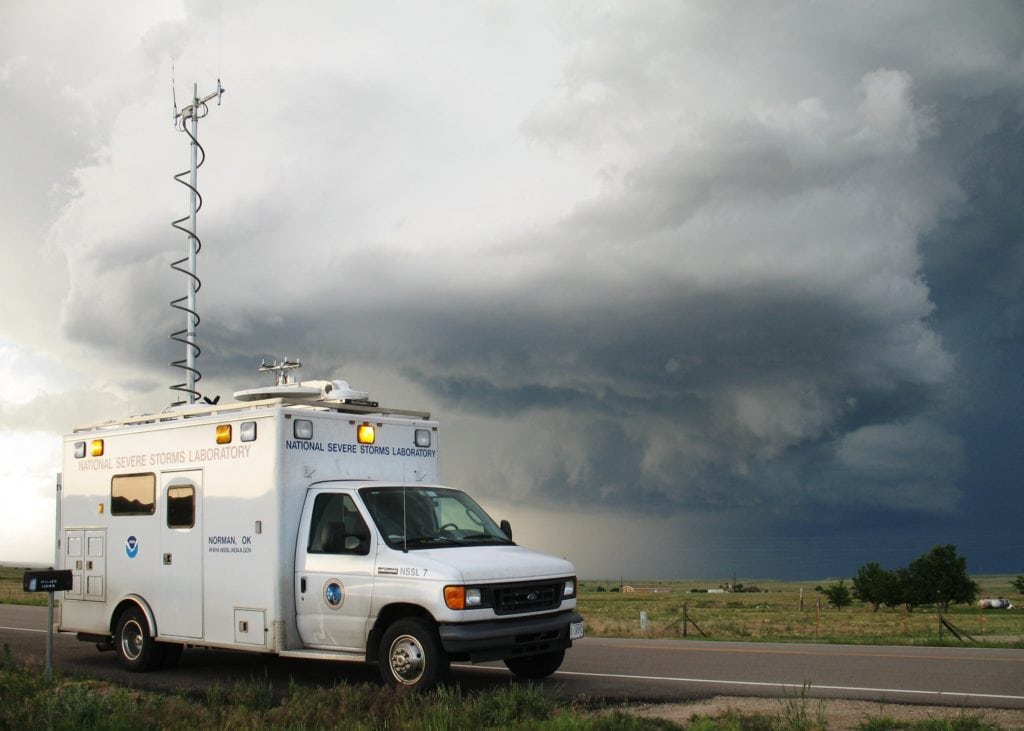
April historically marks the start of tornado “season” in the United States, particularly in Great Plains states such as Texas, Oklahoma, Kansas and the Dakotas in what has become popularly known as “Tornado Alley.” While tornadoes can strike anytime and anywhere—indeed, in 2004 a hiker observed a tornado touchdown at 12,000 feet in California’s Sequoia National Park—April, May and June are typically the most active months for these extreme weather events. According to data from the National Oceanic and Atmospheric Administration (NOAA), 380 tornadoes were recorded in May 2015, while on average there were almost four times as many recorded storms over this three-month period than in any other quarter in the previous three years.
While this is not to say it’s time to panic and run for the underground shelter, it is an appropriate time to take note of precautions and preparations in case of tornado activity in your area. (To learn more about tornado facts and history, check out the quiz at the bottom of this page.)

What you should do before a tornado strikes
Depending on weather patterns, tornadoes can strike quickly, with little or no warning. Have an emergency-preparedness plan for tornadoes in place beforehand, including the following:
- Emergency kit that includes water, food, medical supplies and other essentials such as flashlights, batteries and infant diapers. Plan on needing supplies for at least 72 hours. Ready.gov lists out more information and a checklist at this link.
- Family communications plan that accounts for what you and members of your family should expect in case of an emergency, including shelter locations and appropriate communication and travel steps after an extreme (or any other emergency) event.
- Be sure to pay attention to available weather alerts, either NOAA Weather Radio or local TV and radio stations and online weather-information services such as Weather.com or AccuWeather. (Most of the aforementioned entities offer mobile apps for your smartphone that will include emergency weather alerts and forecasts.)
- Part of your preparedness plan should include knowing what to expect when a tornado is approaching: signs of danger may include darkening, often greenish skies; large pieces of hail; a loud roar, similar to a freight train; and banks of dark, low-lying cloud. This Tornado FAQ page, which is compiled and maintained by NOAA, offers some excellent background info about tornadoes and links to many helpful resources about these storms.
What you should do if a tornado strikes
The first thing to reiterate is that tornadoes can occur without much warning, so it’s key to get to safety immediately. Knowing your shelter locations, whether at home, work, school or out running errands, is a key part of your emergency-preparedness plan. At home, basements, interior hallways or areas under a stairwell are good places in which to seek shelter. This page from NOAA’s Storm Prediction Center in Norman, Oklahoma, expands on shelter considerations.
Flying debris presents the greatest risk in the event of a tornado, so shelter away from windows and doors and plan to keep protective materials (e.g., mattress, sleeping bags, thick blankets) in or near your shelter-in-place location. These can be used to shelter under if or when a tornado hits. At work or places you commonly shop, for example, be aware of locations for bathrooms, storage rooms or other interior shelter areas away from windows and exterior doors.
If in a vehicle when a tornado approaches, the first thing to do is get out of the car and find sturdy, physical shelter or, if possible, drive away from the danger. If that’s not possible, move the vehicle to a safe location and find low-lying ground away from the road in order to avoid flying debris and even vehicles. Again, this page from NOAA’s Storm Prediction Center in Norman is a good resource for what to do in various situations.
Finally, it’s important to note that sheltering under a bridge in the event of a tornado is highly dangerous, given the extreme winds that may blow through and dangers from flying debris, the confined space and the possibility of structural collapse.
For more information about what to do in case of a tornado strike in your area, below are some additional helpful resources. If you have advice or experiences to share with our readers, please post them in the comments section below.
- Tornadoes (Ready.gov)
- Emergency Supply Checklist (FEMA.gov)
- Tornado Safety & Preparedness (Weather.com)
- Tornado Prepardeness (American Red Cross)
- Tornadoes 101 (NOAA)
Main image credit: NOAA’s VORTEX2 field command vehicle in vicinity of thunderstorm in Colorado on June 11, 2009 (Dr. Mike Coniglio, NOAA NSSL/VORTEX II/Flickr)